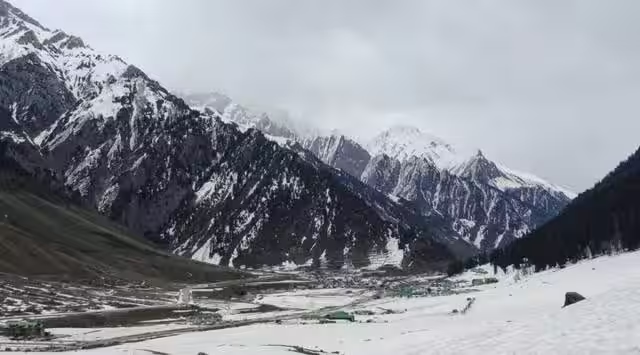Description

Disclaimer: Copyright infringement not intended.
Context
A new study conducted by scientists from the Wadia Institute of Himalayan Geology regarding the Parkachik Glacier in Ladakh.
Details
- The study by scientists of Wadia Institute of Himalayan Geology reveals that three glacial lakes are likely to form around Parkachik Glacier in Ladakh due to rapid ice melt.
- Glacial melt increases the risk of glacial lake outbursts and can lead to water scarcity since glaciers are the region's primary water source.
Study Details and Methodology
- The study is based on satellite imagery between 1971-2021 and supplemented by extensive field surveys between 2015-2021.
- A group of four scientists, led by Dr. Manish Mehta, conducted the research.
- Remote sensing data shows that the glacier retreated at an average rate of around two meters per annum between 1971 and 1999, and at an average rate of around 12 meters per annum between 1999 and 2021.
- Field observations through day-to-day monitoring suggest an even higher retreat rate, at 20.5 meters per annum between 2015 and 2021.

Parkachik Glacier and Its Importance
- The Parkachik Glacier is one of the largest glaciers in the Suru River valley, covering an area of 53 square km and being 14 km long.
- The Suru River valley is part of the southern Zanskar Ranges in the western Himalayas.
- The glacier's rapid melting is attributed to global warming and increasing temperatures in the region, as well as its lower altitude compared to other glaciers in the Zanskar region.
Alarming Ablation and Accumulation
- The study found alarming results in the ablation and accumulation in the glacier.
- Accumulation, which indicates the top of the glacier and the accumulation of snow, has
- Ablation, which indicates the glacier's lower half and where melting typically takes place, has
Formation of Proglacial Lakes and Its Implications
- The study reveals that 'surface ice velocity' decreased from 45 meters per annum in the lower ablation zone in 1999-2000 to 32 meters per annum in 2020-21, a reduction of 28%.
- According to the models used in the study, three proglacial lakes are likely to form near the glacier, posing two main issues:
-
- Possibility of glacial lake outbursts, which could affect nearby villages, including Kargil, situated just 80 km away.
- Loss of a valuable water resource since Ladakh primarily relies on glacial melt for water.
- In Asia, three billion people are dependent on glaciers for water.
Impact of Glacial Retreat
- The study highlights the potential risks of glacial retreat, including the most catastrophic glacial lake outburst in recent years, which led to the 2013 Kedarnath flash floods in India.
|
PRACTICE QUESTION
Q) How can proactive climate action play a pivotal role in mitigating the risks associated with glacial retreat in the Himalayas and safeguarding water security for millions of people dependent on glacier-fed rivers in Asia? (250 words)
|
.jpg)
https://indianexpress.com/article/india/ladakh-glacier-melting-may-form-three-lakes-says-study-8865807/
















